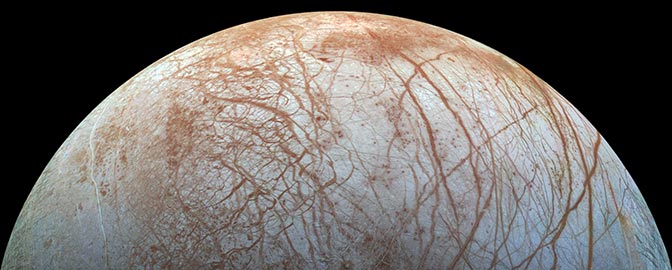Day of Action Deep Prep: Planetary Defense
The protection of Earth from hazardous asteroids and comets—planetary defense—is one of the three core enterprises of The Planetary Society. Working through this deep prep session will increase the participant's expertise on the major issues, recent history, and politics driving planetary defense policy in the United States.
Context
NASA's Planetary Defense program has grown from a meager $4-million-per-year effort in the early 2000s to a $200-million-per-year mature spaceflight program today. However, the program maintains a tenuous hold on its newfound resources: it has struggled to secure funding necessary to enable its next flight mission, the asteroid-hunting NEO Surveyor space telescope, though prospects have improved with the FY 2024 budget proposal.
In 2005, Congress passed the George E. Brown Survey Act, which set a goal of detecting 90% of all 140-meter and larger NEOs by 2020. Due to lack of funding, NASA did not achieve this goal. At current detection rates, it will take another 30 years to reach this detection threshold.
Enter NEO Surveyor. NEO Surveyor is one of our top mission priorities. It is a space-based telescope dedicated to finding near-Earth objects, searching in the infrared spectrum where such bodies glow brightly against the cold dark of space. Once launched, it is expected to achieve the congressionally mandated 90% detection threshold within 10 years.
The mission is endorsed by the National Academies of Sciences, was authorized by Congress in the 2022 CHIPS and Science Act, and is currently in its implementation phase by NASA.
The Biden administration requested $209.7 million for NEO Surveyor in 2024. This keeps the mission on track for a 2027 or 2028 launch. If the project receives less, the launch date will slip.
Budget
NASA's Planetary Defense Program lives within the Planetary Science Division account of the Science Mission Directorate. It is composed of two major programs: ground-based observations, which account for about $40M annually, and flight missions, with costs that vary by the project. The current flight mission is NEO Surveyor, which is under active development.
The FY2024 budget proposes necessary funding to launch NEO Surveyor by 2027 or 2028: $209.7 million.
NASA's planetary defense spending, with Biden's FY 2024 proposal. Source: Planetary Science Budget Dataset, compiled by Casey Dreier for The Planetary Society (accessible on Google Sheets or downloadable as an Excel file).
Our goal for the FY2024 appropriations process is to secure this requested funding for NEO Surveyor — no modifications to the request are necessary.
Background materials for Planetary Society's Planetary Defense positions
- Increasing the Scope of Planetary Defense Activities: Programs, Strategies, and Relevance in a Post-COVID-19 World (PDF) by The Planetary Society. This report was our official recommendation to the scientific community about the importance of planetary defense and how it is a relevant topic after the global experience with COVID-19.
- How NASA's planetary defense budget grew by more than 4000% in 10 years recent trends in funding for planetary defense, and how they were driven mainly by other NASA priorities.
- Asteroid Defense 101 Take The Planetary Society's free online course about the NEO risk and ways to protect our planet.
- Why an Asteroid Strike Is Like a Pandemic Casey's op-ed in Scientific American connecting pandemic awareness/preparation to planetary defense — a good way to make planetary defense relevant to people's lived experiences.
About NEO Surveyor
- NEO Surveyor, Protecting Earth from Dangerous Asteroids A high-level overview of the NEO Surveyor mission and its goals.
- Construction begins on NASA's NEO Surveyor asteroid-hunting telescope
- Selections from the report "Finding Hazardous Asteroids Using Infrared and Visible Wavelength Telescopes" (PDF) by the National Academies of Sciences, Engineering, and Medicine. This provides a helpful primer on planetary defense and why we need a space-based telescope to search for hazardous asteroids. This independent report is a primary justification for the NEO Surveyor mission.
- NASA’s NEO Surveyor Successfully Passes Key Milestone (Dec 2022)
Goals
After this reading, you should be able to:
Clearly explain the concept, importance, and relevance of planetary defense
Understand the threat that near-Earth objects pose to Earth, and what can be done to prevent a potential impact in the future
Explain the need for the NEO Surveyor mission, and how it would address congressionally-mandated goals for NEO detection
The Day of Action
The Day of Action brings together The Planetary Society members and members of Congress during this premier space advocacy event.


 Explore Worlds
Explore Worlds Find Life
Find Life Defend Earth
Defend Earth



